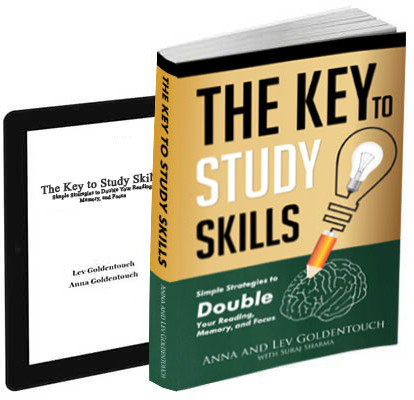For students who want to improve their academic performance and study techniques, mind maps have emerged as a game-changing tool. Mind mapping provides a dynamic, visually appealing manner of organizing information, in contrast to conventional note-taking techniques, which can be linear and tiresome. Students’ understanding, memory, and creativity can all be improved by transforming material into vibrant, connected diagrams. This approach makes learning more fun while promoting a deeper comprehension of the material.
Mind maps are becoming more and more popular among intelligent students since they simplify even the most difficult subjects. Mind mapping is revolutionizing education by facilitating visual learning, promoting logical thinking, and simplifying concepts. Whether you’re studying for tests or working on difficult assignments, using mind map study skills can significantly enhance your academic achievement and learning process. Let’s examine why intelligent kids favor this cutting-edge instrument.
Why Mind Mapping for Smart Students?
Mind mapping is a technique that complements the way the brain naturally arranges information, not just a study aid. Mind mapping gives intelligent students an advantage by transforming abstract concepts into tangible, visual representations. Students can discover connections and get a thorough grasp of the subject matter by employing diagrams to link concepts. This approach works especially well for topics that call for analysis, problem-solving, or memorizing. Additionally, by promoting the use of colors, imagery, and original patterns, mind maps foster creativity. These characteristics make learning interesting and let students modify the method to suit their own requirements. Astute students use mind maps to save time, lower stress levels, and boost their self-esteem.
10 Reasons to Use Mind Maps for Study Skills
1. Enhanced Comprehension and Understanding
Mind maps break down difficult subjects into manageable chunks and offer a visual depiction of them. Students can more easily understand complex ideas since the brain processes connections and visuals more quickly than it can long texts. Students gain a deeper comprehension of the material by constructing a network of linked ideas.
2. Boosted Memory Retention
The visual and associative character of mind maps promotes memory recall. Multiple brain regions are activated when pupils incorporate colors, images, and keywords into their mind maps, which improves recall. Mind maps produce a memorable mental structure, in contrast to linear notes, which are more difficult to memorize.
3. Improved Focus and Engagement
Conventional note-taking can become tedious and cause disinterest. Mind maps encourage students to critically think about the connections between ideas, which keeps them actively invested. This practical method helps students stay focused and enhances the interactive nature of studying.
4. Simplified Complex Subjects
Complex linkages and extensive knowledge are common in subjects like physics, history, and mathematics. Mind maps visually connect similar subjects, simplifying these complications. Students are able to comprehend how various components fit together and perceive the wider picture as a result.
5. Encourages Creativity
Mind mapping is an art form that fosters creativity and is not simply for studying. Students can alter their mind maps to suit their own learning preferences by utilizing various colors, forms, and patterns. In addition to making studying more fun, this creative approach increases cognitive flexibility.
6. Faster Note Revision
Rereading pages of notes is far slower than scanning a mental map. Students can quickly identify important ideas thanks to the clear structure and succinct keywords, which increases the effectiveness and efficiency of review sessions.
7. Supports Visual Learners
Mind maps are very helpful for those who learn best visually. Their preferred methods of learning are well-served by the arrangement of the diagrams, colors, and space, which facilitates knowledge absorption and retention.
8. Facilitates Active Learning
Active engagement is necessary when creating a mind map. Critical thinking abilities are used as students are required to evaluate, classify, and summarize information. Passively copying notes is not nearly as successful as this active learning technique.
9. Customizable for Any Subject
Mind maps can be customized to fit any subject, from physics to languages. A mind map about literature, for instance, may examine themes, characters, and settings, whereas a mind map about biology might concentrate on systems, processes, and classifications.
10. Promotes Logical Thinking
Students can create logical links between concepts with the aid of mind maps. Logical thinking skills are improved by the process of arranging information into branches and sub-branches, which mimics how the brain naturally analyzes information.
Start Mind Mapping Today!
A straightforward yet effective method that might revolutionize your learning style is mind mapping. A main idea, a few branches for subtopics, and a few keywords to indicate important aspects are all you need to get started. To make your mind map interesting and memorable, incorporate diagrams, colors, and images. Start with a subject you’re studying right now, then try out other layouts to see which one suits you best. Even easier and more collaborative processes can be achieved using digital technologies like MindMeister and XMind. Adding mind mapping to your study regimen can help you become more creative, organized, and productive. Don’t hesitate; begin mind mapping right now to see how it affects your educational process.
Conclusion
Studying using mind maps is more than just a fad; it’s a revolutionary method of education. Students can succeed academically and have fun by using mind maps, which combine creativity, organization, and critical thinking. Whether you’re studying for an exam or taking on a difficult subject, using mind maps can improve your study skills and result in long-term success.
FAQs
What are mind mapping study skills?
The term “mind map study skills” describes the application of mind maps as a method to improve organization and learning. This method uses visual representations of information to enhance creativity, recall, and comprehension.
Are mind maps good for studying?
Indeed, mind maps are a great tool for learning. They make learning interesting and dynamic, improve memory retention, and simplify difficult subjects.
How to use mind maps for study?
Start with a main idea, make branches for subtopics, and depict information with keywords, colors, and images when using mind maps for study. This visual method improves learning outcomes.
How can mind mapping improve study habits?
By promoting organization, creativity, and active learning, mind mapping enhances study habits. It improves students’ ability to focus and retain knowledge.
What is the role of a student mind map?
As a visual study aid, a student mind map arranges and condenses information to make it simpler to comprehend and retain.
How can mind mapping improve learning?
By encouraging active participation, improving memory, and stimulating creative thinking, mind mapping enhances learning. It enables students to comprehend links between concepts and perceive the wider picture.
How does mind mapping help memory?
By producing powerful visual and association clues, mind mapping improves memory. The use of colors, images, and keywords activates multiple brain areas, improving recall.

Get 4 Free Sample Chapters of the Key To Study Book
Get access to advanced training, and a selection of free apps to train your reading speed and visual memory

